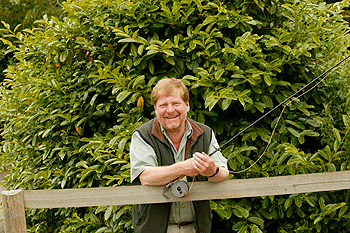Gamekeeper

Thirty-one years ago, as a raw recruit trainee game adviser, I was sent for a week with an old-fashioned ?hedgerow keeper? on the Suffolk/Essex border. Peter Grass was his name, one of the famous Grass family of keepers which had spread from Norfolk way back in the early days of gamekeeping. A few years ago I was told that Peter, who was by then long retired, still remembered me, and claimed that he had taught me all I know.
Well, it would be fair to say that I was on a steep learning curve in those days, and I certainly remember gaining a signifi cant insight into a type of keepering that has now largely gone, from Peter and his underkeeper, Reid Summerhayes. In fact, it would be fair to say that hedgerow keepers of Peter?s calibre were already a very scarce commodity.
At that stage, Peter?s estate was still largely a wild bird shoot. Sadly, even then, the wild partridges had faded and were few in number, so there was a small redleg rearing programme to provide some early-season sport. However, the pheasants were still all wild, and the main springtime job consisted of looking after the wild breeding hens. This meant that predation control was a top priority, and both keepers seemed to spend nearly every waking hour focused on that activity.
Both beats had a network of tunnel traps, arranged in a series of carefully thought-through walks, so that they could be checked daily. Each trap was sited where it could be checked from the circuit followed, without the need to wander off down a hedge and then re-trace your steps. Any such extra yards walked were considered a waste of time in what amounted to a daily time and motion study.
The first walk started soon after first light, at about 6am, and two hours later it was time to go in for breakfast. The next, slightly longer, circuit took until lunchtime to complete, and so on, until evening fell.
Stoats, weasels and rats were the main target of this activity, and I was surprised how many stoats there were to catch. There were also quite a few rabbits, and small ones were a common by-catch in the tunnels ? useful ferret food, and a piece of liver was sometimes used as bait where a stoat was known to be active.
Shortage of foxes, more stoats
Each of the walks had a fox snare or two as well, although we did not catch a single one during my visit. In fact, foxes were pretty scarce in that part of the world, and Peter said that they only killed about two a year, one in a snare and another at some time when out shooting rabbits at night. This shortage of foxes was part of the explanation for high stoat numbers ? with no foxes to kill them they were able to flourish. Also, despite an active control programme for the sake of farm crops, there were plenty of rabbits on which the stoats could feed.
The other key game predators that needed addressing were crows and magpies. In common with the foxes, they were far from abundant, and that was probably just as well. Way back then, the Larsen trap had not been ?discovered? here in the UK, and its proper use had already been banned in its native Denmark. Crow and magpie control was mostly by chance shots during the trap walks. However, if a bird was proving elusive, the keepers would spend some time lying in wait for a shot over a pegged out rabbit, or perhaps an owl decoy.
A gun was carried at all times during the rounds, and I remember that Peter?s was pretty much polished silver rather than blued, from years of daily use. As well as crows and magpies, there would be an occasional opportunity of a shot at a stoat or weasel. Progress on the rounds was unhurried and quiet, so as to maximise these opportunities. One of the other key parts of the project was to search for pheasant nests. These were then marked down and carefully checked each day, with a view to identifying trouble quickly. Sucked eggs would mean that a crow was probably active, and a hen killed would be likely to be a stoat or weasel. In either case, measures would be taken to catch the culprit quickly, before further damage could be done. Peter, in particular, had an amazing eye for a nest, and several times he spotted one from the cab of his Subaru pickup while driving slowly along the lanes that dissected his beat.
Nowadays, this attention to detail would be considered uneconomic on most shoots, but I regret this. In particular, and with fox snaring very much in focus, many keepers could take a leaf out of the old timers? book, and spend more time looking for fox signs, and less setting and checking snares. A more targeted approach means more foxes for less use of snares.








